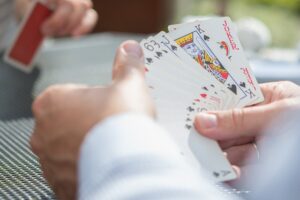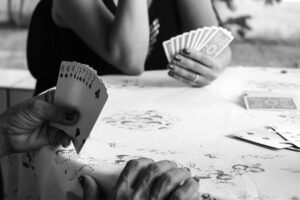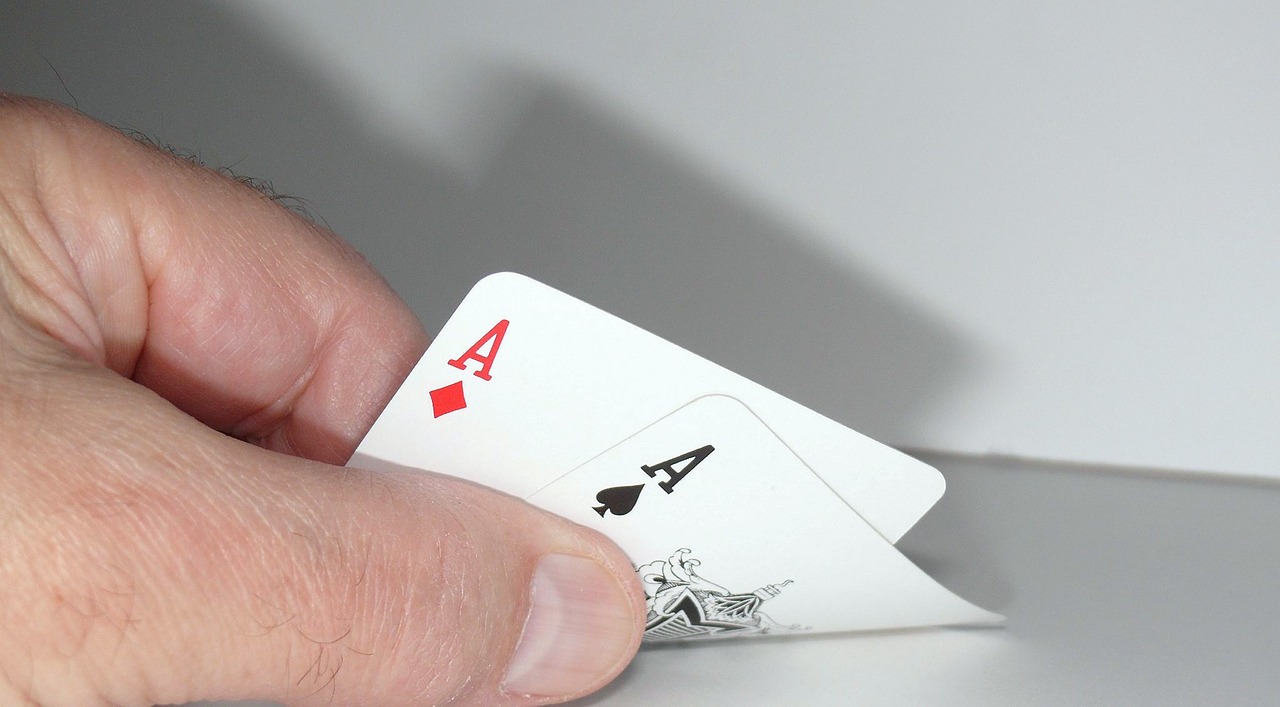Mastering the art of bluffing in poker is like possessing a secret superpower that can make or break your game. It’s the ability to deceive, manipulate, and ultimately triumph over even the most seasoned opponents. You can try practicing the basic skill by checking out theridgewoodblog.net/unique-tricks-to-stump-friends-with-playing-cards/.
But how do you unlock this elusive skill? How do you become a master bluffer and leave your rivals guessing at every turn? Fear not, intrepid card player. Today, we’ll be exposing insiders’ secrets of bluffing and equipping you with the tools needed to outwit and outplay your adversaries.
Mix Up Your Play
 The element of surprise is key here. If you always follow the same patterns and betting behaviors, observant opponents will quickly catch on and exploit your predictability. To keep your adversaries guessing, vary your playing style. Sometimes, they play aggressively, raising bets and putting pressure on others. Other times, adopt a more passive approach, checking or calling instead of raising.
The element of surprise is key here. If you always follow the same patterns and betting behaviors, observant opponents will quickly catch on and exploit your predictability. To keep your adversaries guessing, vary your playing style. Sometimes, they play aggressively, raising bets and putting pressure on others. Other times, adopt a more passive approach, checking or calling instead of raising.
Mixing up your play allows you to create doubt in the minds of those seated around the table. Start off conservatively during early rounds to build credibility as a cautious player. Then, suddenly shift into high gear later on with bold bluffs that catch everyone off guard.
Pick the Right Opponents
Bluffing should not be just about randomly choosing someone to go up against; it requires careful observation and strategic thinking. So look out for players who are more conservative and risk-averse, as they are less likely to call your bluffs. On the other hand, avoid going head-to-head with aggressive players who love taking risks, as they may see through your bluff more easily. It’s also a good idea to consider their level of experience. Furthermore, pay attention to each player’s stack size. Bluffing becomes more effective against opponents with smaller stacks since they will be hesitant to risk losing what little chips they have left.
Mind Your Table Image
Bluffing is also about how you present yourself and how your opponents perceive you. So, let’s dive into some tips on how to mind your table image and use it to your advantage. If you want others at the table to believe your bluffs, you need a consistent playing style. This means mixing up both strong hands and weaker ones in order to keep them guessing. Pay attention to how others are perceiving you. Are they viewing you as tight or aggressive? Use this perception strategically by either reinforcing their beliefs or challenging them when necessary. Another aspect of minding your table image is being aware of any tells that may give away the strength or weakness of your hand.
Tell the ‘Tells’ But Not True Ones
 When it comes to bluffing in poker, one of the most effective strategies is to tell tales. But hold on a second. I’m not talking about spinning elaborate lies or creating fictional stories. Instead, I’m referring to using subtle signals and body language to mislead your opponents, called ‘tells.’ The art of telling tales at the poker table lies in your ability to create an illusion of strength or weakness when, in fact, the opposite may be true. It’s all about carefully controlling your demeanor and actions to give off specific impressions that can throw off your opponents’ reads on you. For example, let’s say you have a monster hand but want others to think you’re bluffing. You might feign nervousness by fidgeting with your chips or avoiding eye contact. On the other hand, if you’re holding a weak hand but want others to believe otherwise, exude confidence through steady eye contact and assertive betting.
When it comes to bluffing in poker, one of the most effective strategies is to tell tales. But hold on a second. I’m not talking about spinning elaborate lies or creating fictional stories. Instead, I’m referring to using subtle signals and body language to mislead your opponents, called ‘tells.’ The art of telling tales at the poker table lies in your ability to create an illusion of strength or weakness when, in fact, the opposite may be true. It’s all about carefully controlling your demeanor and actions to give off specific impressions that can throw off your opponents’ reads on you. For example, let’s say you have a monster hand but want others to think you’re bluffing. You might feign nervousness by fidgeting with your chips or avoiding eye contact. On the other hand, if you’re holding a weak hand but want others to believe otherwise, exude confidence through steady eye contact and assertive betting.
Mastering the art of bluffing in poker is no easy task. It requires practice, observation, and a willingness to take calculated risks. By mixing up your play, picking the right opponents, minding your table image, and telling tales (but not true ones), you can enhance your bluffing skills and increase your chances of success at the poker table.

